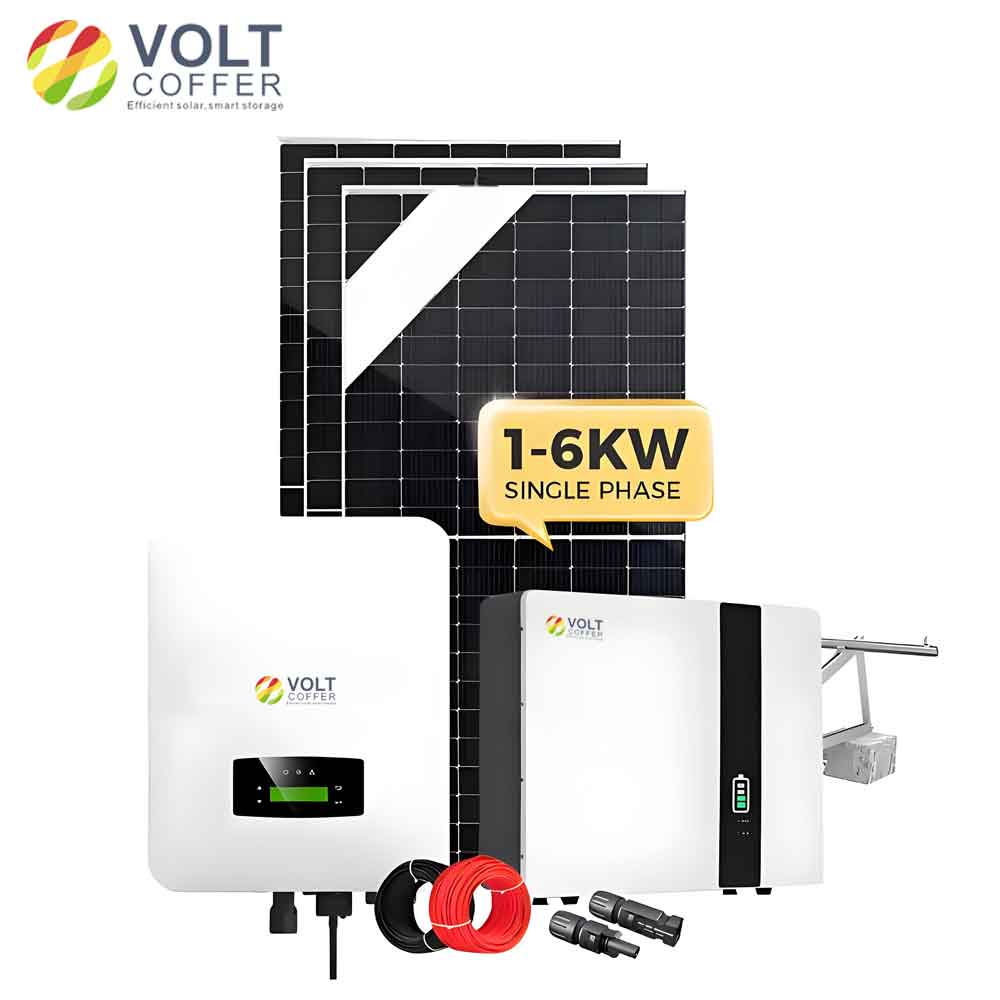Smart technology integration in modern solar kits significantly enhances the efficiency, reliability, and user-friendliness of solar energy systems. This guide explores the various aspects of smart technology integration, including the types of smart technologies used, their benefits, and their impact on solar kit performance.

1. Types of Smart Technologies in Solar Kits
Smart Inverters:
- Features: Advanced monitoring, grid interaction, and remote control capabilities.
- Benefits: Improved energy management, enhanced grid stability, and better system diagnostics.
Energy Management Systems (EMS):
- Features: Centralized control and monitoring of energy generation, storage, and consumption.
- Benefits: Optimization of energy use, peak demand reduction, and cost savings.
Smart Meters:
- Features: Real-time tracking of energy production and consumption.
- Benefits: Detailed energy usage insights, improved billing accuracy, and enhanced energy efficiency.
IoT (Internet of Things) Devices:
- Features: Connectivity and communication between various components of the solar system.
- Benefits: Automated control, predictive maintenance, and real-time alerts.
Battery Management Systems (BMS):
- Features: Monitoring and control of battery performance and health.
- Benefits: Prolonged battery life, improved safety, and optimized energy storage.
2. Benefits of Smart Technology Integration
Real-Time Monitoring and Control:
- Remote Access: Users can monitor and control their solar systems remotely via mobile apps and web portals.
- Performance Tracking: Real-time data on energy production, consumption, and storage helps optimize system performance.
- Alerts and Notifications: Immediate alerts for system faults or performance issues enable quick troubleshooting and maintenance.
Enhanced Energy Efficiency:
- Demand Response: Smart systems can adjust energy usage based on real-time demand and supply conditions.
- Load Management: Prioritize critical loads and shift non-essential loads to periods of higher solar generation.
- Energy Optimization: Intelligent algorithms optimize the use of generated and stored energy, reducing reliance on the grid.
Improved Reliability and Longevity:
- Predictive Maintenance: Smart technology can predict potential issues before they become critical, reducing downtime and maintenance costs.
- Component Health Monitoring: Continuous monitoring of system components ensures they are operating within optimal parameters, extending their lifespan.
- Grid Interaction: Smart inverters can provide grid support functions, improving grid stability and reliability.
User-Friendly Interfaces:
- Intuitive Dashboards: User-friendly interfaces provide comprehensive insights into system performance and energy usage.
- Customizable Reports: Generate detailed reports on energy production, consumption, and savings.
- Energy Insights: Gain a deeper understanding of energy patterns and make informed decisions to enhance efficiency.
Cost Savings:
- Peak Shaving: Reduce peak demand charges by intelligently managing energy use and storage.
- Time-of-Use Optimization: Use stored energy during high-cost periods and save during low-cost periods.
- Enhanced ROI: Improved efficiency and reliability lead to faster payback periods and greater long-term savings.
3. Impact on Solar Kit Performance
Higher Energy Yield:
- Optimal Performance: Smart inverters and energy management systems ensure that the solar system operates at peak efficiency.
- Reduced Losses: Minimizing energy losses through intelligent control and optimization.
Greater Reliability:
- System Health: Continuous monitoring and predictive maintenance reduce the likelihood of system failures.
- Grid Support: Enhancing grid stability through advanced grid interaction capabilities of smart inverters.
Enhanced User Experience:
- Convenience: Remote monitoring and control offer unparalleled convenience to users.
- Transparency: Detailed insights into energy production and consumption foster better energy management practices.
Key Components and Their Roles
| Component | Role | Benefits |
|---|---|---|
| Smart Inverters | Convert DC to AC with advanced features | Improved efficiency, grid support, remote monitoring |
| Energy Management Systems (EMS) | Centralized control of energy generation, storage, and consumption | Optimized energy use, peak demand reduction, cost savings |
| Smart Meters | Real-time tracking of energy production and consumption | Detailed insights, improved billing accuracy, energy efficiency |
| IoT Devices | Connectivity and communication between system components | Automated control, predictive maintenance, real-time alerts |
| Battery Management Systems (BMS) | Monitor and control battery performance and health | Prolonged battery life, improved safety, optimized storage |
Conclusion
The integration of smart technology in modern solar kits represents a significant advancement in solar energy systems. It enhances energy efficiency, reliability, and user-friendliness, making solar power a more attractive and viable option for homeowners. By leveraging smart inverters, energy management systems, smart meters, IoT devices, and battery management systems, modern solar kits offer improved performance, greater reliability, and enhanced user experience. Investing in smart technology-enabled solar kits ensures that homeowners can maximize their return on investment while contributing to a sustainable energy future.
